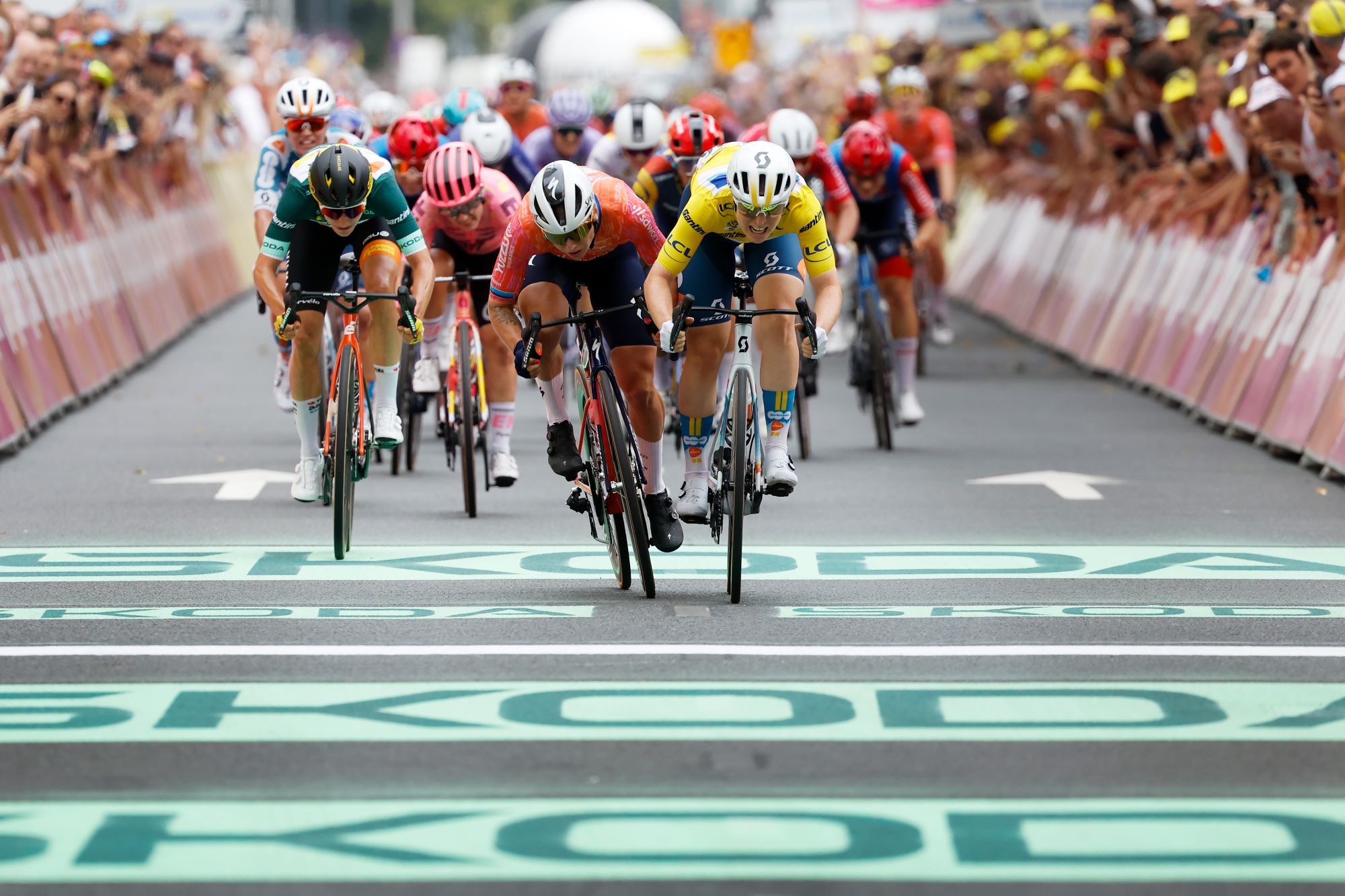
On Tuesday, SD Worx-Protime’s Barbara Guarischi became the first rider to receive a yellow card under the new UCI ruling at the Tour de France Femmes.
The UCI, cycling's governing body, has introduced 'yellow cards' as part of a range of measures designed to make pro cycling safer.
The Italian sprinter received a warning regarding alleged dangerous riding during the stage two sprint, which was won by Charlotte Kool (dsm–firmenich PostNL). Guarischi was seen taking her hands off her handlebars and stopping pedalling in the middle of the bunch after being involved in Lorena Wiebes' lead-out train.
A line in the official post-stage communiqué, issued by the organiser, revealed that Guarischi had been given a warning for her actions. It read: "Improper conduct that endangers others in the final sprint as per Article 2.12.007.8.2-1 of the UCI regulations."
SD Worx later confirmed Guarischi's yellow card. The new system, developed by the UCI, is part of a trial involving a series of rule changes designed to promote safety in road racing.
As a result of the work of the SafeR group, the UCI’s independent safe cycling project, the system was brought in at the start of the summer in June, and also involved reconfiguring the 3km rule - in which riders involved in crashes or impacted by mechanicals during the closing kilometres of races are given the same finish time as those around them at the time an incident occurs - as well as potential restrictions on the use of race radios.
Yellow cards will continue to be tested in races between August and the end of the current year, with the aim of then introducing the system permanently from 2025, including the introduction of sanctions. Unlike in football, yellow cards won’t physically be shown for offences, but will continue to be listed in post-race communications, alongside other fines and sanctions.
An accumulation of yellow cards during the season next year could then result in potential disqualification from races or suspension.
As well as riders, yellow cards will also be used to monitor bad conduct from other members of a race convoy, including sports directors, motorbike drivers and members of the media. Alongside dangerous sprinting, a rider taking off their helmet during a race would lead to a yellow card, according to the UCI’s article 2.12.2007.







